
The 7 Biggest Mistakes People Make When Writing a Living Trust
June 11, 2023
[Guide] The Process of Commercial Real Estate Underwriting
June 23, 2023
Disclaimer: I am not an attorney and this article is not intended as a substitute for advice from the appropriate legal, zoning, financial, construction and/or tax professionals. This information is provided for educational purposes only and is made without warranties or representations
California is a huge and varied state, and the considerations a commercial landlord might have can be very different if you’re operating a small parcel of real estate in the middle of nowhere or a large facility in the heart of one of our major cities. Fortunately – or unfortunately, depending on your perspective – the considerations you’ll have when operating commercial land in California are governed by state-level rules and regulations, and it’s important to know the unique rules that apply to you in the golden state.
My goal today is to provide as comprehensive a resource as possible for commercial landlords in California.
I won’t be digging deep into each topic, but rather providing further reading for each. If you have a question I haven’t covered, though, feel free to ask!
1: Types of Commercial Leases
There’s not really anything unique about California in terms of the kinds of leases used for commercial buildings, but it’s still important to know which kinds of leases exist and what the benefits or drawbacks are to each.
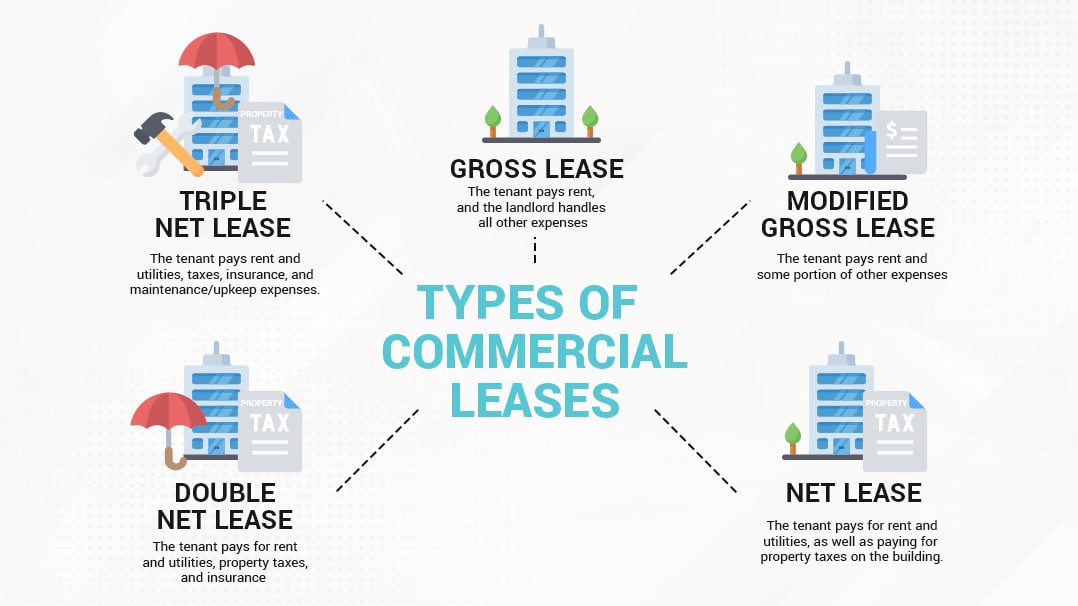
There are, broadly speaking, five kinds:
- Gross Lease: The tenant pays rent, and the landlord handles all other expenses, though they may pass some portion of them on to the tenant later.
- Modified Gross Lease: The tenant pays rent and some portion of other expenses, and the landlord handles most other expenses.
- Net Lease: The tenant pays for rent and utilities, as well as paying for property taxes on the building. Rent is generally somewhat lower to compensate for the additional expense.
- Double Net Lease: The tenant pays for rent and utilities, property taxes, and insurance premiums for the property (or their portion of the property, in the case of larger multi-tenant properties.)
- Triple Net Lease: The tenant pays rent and utilities, taxes, insurance, and maintenance/upkeep expenses.
Triple Net leases are generally the most popular, though they have some significant drawbacks and are prone to tenants trying to escape the lease when expenses mount above their predictions. You can learn more about the different kinds of leases here.
2: Important Lease Terms
A ton of information goes into a lease, and it’s critical that you understand the important terms and how they impact you as a landlord, your tenants, and the options you have to negotiate.

Some terms you should know and stipulate include:
- Permitted Use: What the tenant can do with the property and what they can’t.
- Core Information, including lease duration, terms, base rent, expense responsibility, and renewal times.
- Business Sale Clauses.
- Right to Sublet, if necessary.
- Going Dark rights, which are the right of a business owner to break the lease if their business goes, well, out of business.
- Remedies for breach of lease by either party.
Some of these have specific regulations in California, so it can be a good idea to talk to a real estate lawyer based in California to draft a lease that is legal, enforceable, and fair.
3: California Rules on Security Deposits
Laws and regulations surrounding security deposits can be serious business for landlords. California does not have a limit on what you can charge as a security deposit and does not require you to hold the funds separately from other funds; however, in the case of a dispute, the tenant has priority over everyone except a trustee in bankruptcy for the return of those funds. When a tenant leaves, and you receive your property back, you have 30 days to return the security deposit.
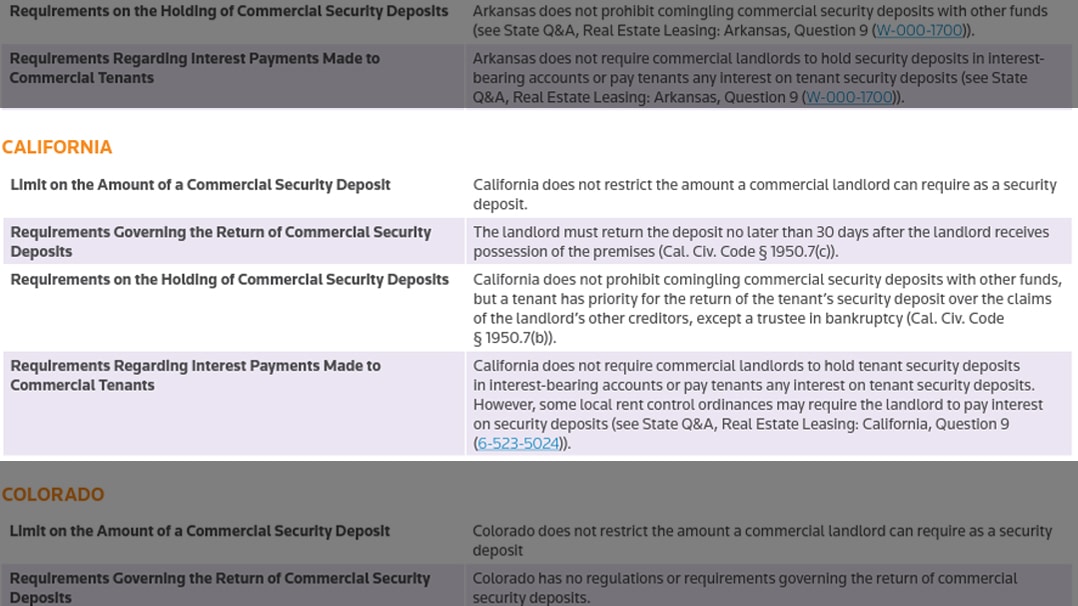
You are not required to hold the security deposit in an interest-bearing account state-wide, but some local ordinances may be more specific, so check your local jurisdiction.
4: Fair Housing Laws in California
California has some of the most tenant-protective laws in the country when it comes to fair housing. This applies both to small-scale landlords with a couple of houses to rent and commercial landlords managing apartment complexes and other large housing portfolios. Fair housing and anti-discrimination clauses can be very important.
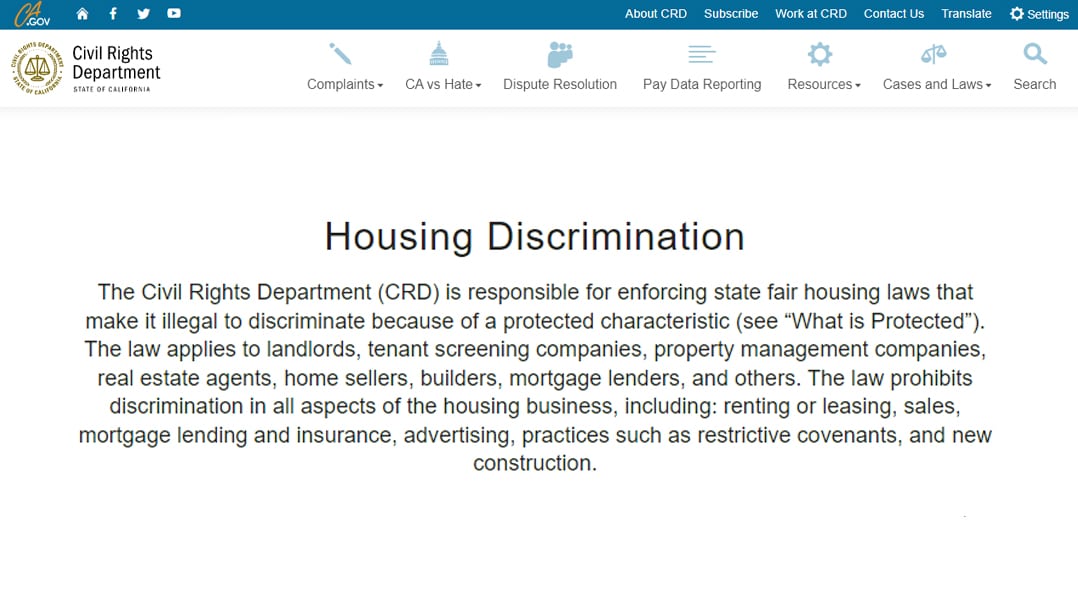
California has a ton of resources and information available on this subject, aggregated here. You don’t necessarily need to memorize everything on that page, but reading through it and making sure your practices, lease, and other terms are in compliance can be very important from a liability perspective.
5: Tenant Improvements and Responsibility
One of the trickier parts of managing a commercial property, especially for anchor stores and long-term leases, is sorting out the ownership over various fixtures and improvements made over the years. If you start with a “shell” property and the tenant makes numerous improvements over the duration of their occupancy but then decides to leave for one reason or another, who owns what? Some things, like furniture, can reasonably be expected to go with the tenant. Others, like improvements to the building itself, might not.
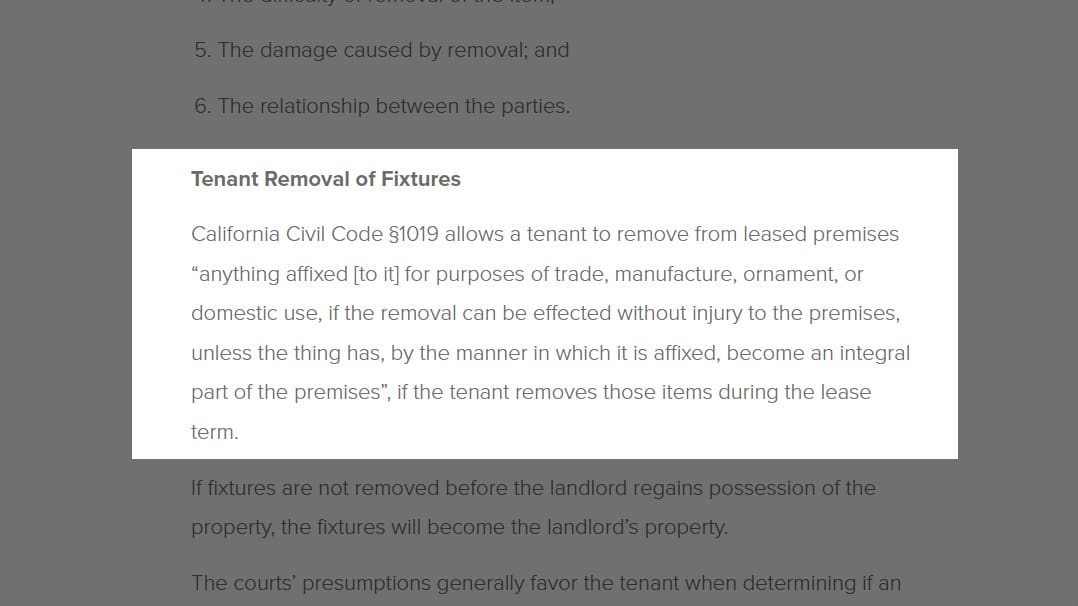
California law allows tenants to remove anything they added that isn’t integral to the property or injurious in its removal. However, lease terms can supersede this regulation, so it’s important to define expectations and make sure you’re on the same page as your tenants.
6: Building Maintenance and Repairs
Maintenance and repairs to commercial properties can be a significant ongoing expense, and there are a ton of different ways to manage this.

From passing costs to tenants, to amortizing expenses as tax write-offs, to expectations around maintenance, all of this can be defined in the lease. Moreover, different kinds of properties can have different expectations of who will be responsible for what, so it’s not enough to have a one-size-fits-all lease for a whole commercial property portfolio.
7: ADA Compliance in New Construction
Depending on the kind of building you’re constructing on a commercial parcel, you will have to comply with the full extent of the Americans with Disabilities Act regarding accessibility to facilities and the property as a whole.

Note that this also includes significant alterations to an existing building. If you’re adding a new wing or doing a significant remodel on part of a building, California law requires accessibility to that improvement to be added. You don’t need to retrofit the entire property, necessarily, but you do need access to the improved section. Essentially, there’s no excuse not to have it when you’re already doing the work.
8: ADA Compliance in Older Buildings
What about existing buildings and facilities that aren’t already ADA-compliant?
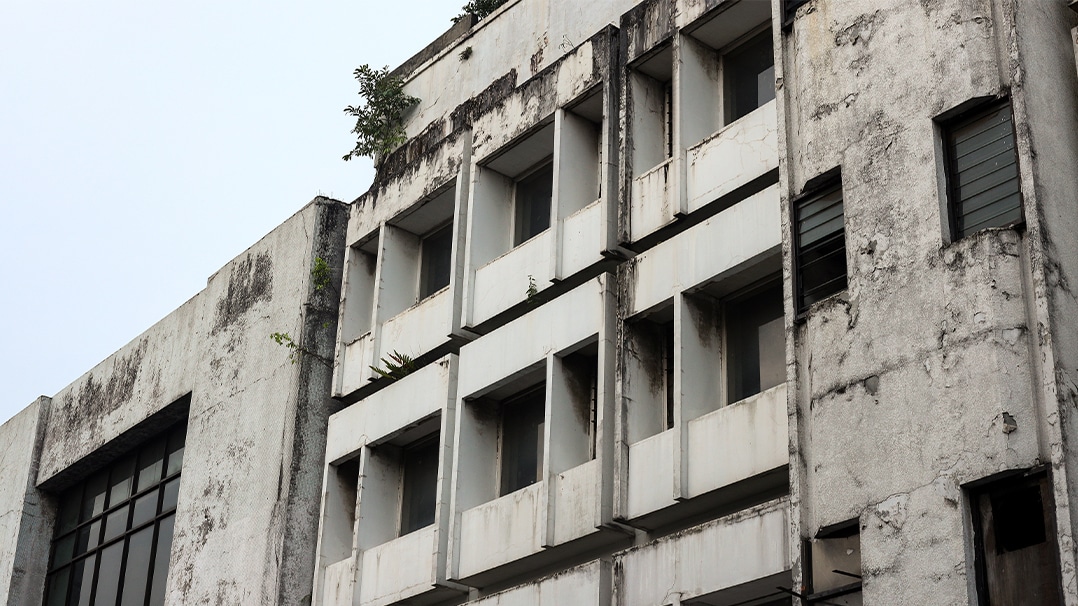
If possible, you need to make improvements to adhere to the ADA; however, if it would be significant in expense or difficulty, you may not be required to make such improvements until such time as you’re already making other improvements or remodeling the area. You can learn more about the exemptions here.
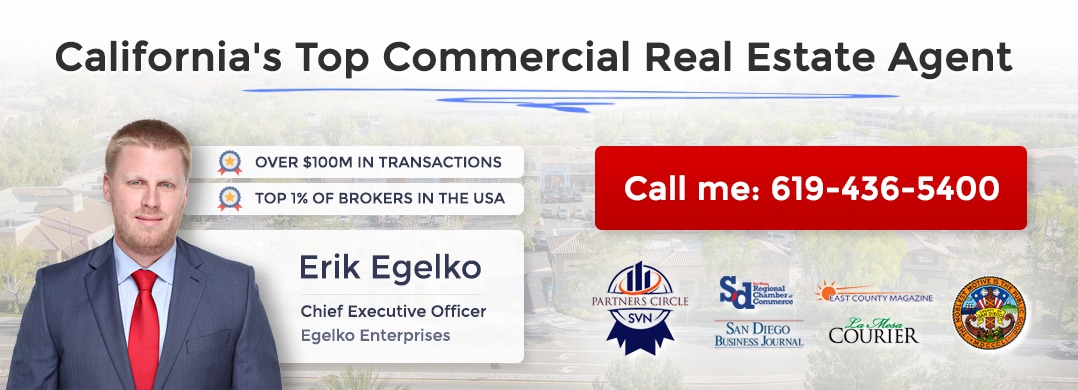
9: Rent Increase Limitations and Controls
Rent increases are an expected part of renting any building, residential or commercial. However, the amount rent can be increased, the notice you’re required to give, and how that rent is calculated can all be subject to a variety of regulations and limitations. California state law only has a few controls, though they are fairly comprehensive, like the Tenant Protection Act of 2019 (AB 1482).

More importantly, though, different cities will have their own restrictions and limitations. For example, here’s Los Angeles’ page on rent control, and here’s my review of San Diego’s new tenant protection ordinance. Depending on the type of commercial property you’re operating, you may or may not need to know specific details about these controls (they often just apply to residential properties but can occasionally apply to business properties as well.)
10: Evictions and the Eviction Moratorium
Evictions, in general, are highly regulated, both nationally and locally. In California, a common issue is large (often out-of-state) corporations buying up properties and coming up with a thin excuse to evict everyone, make minor improvements, and re-lease the properties for vastly increased rents. A variety of proposals have been discussed and even passed to help cut back on unnecessary evictions. As with many other items on this list, many of these are city-level, not state-level, so it’s worth discussing the subject with a local lawyer.
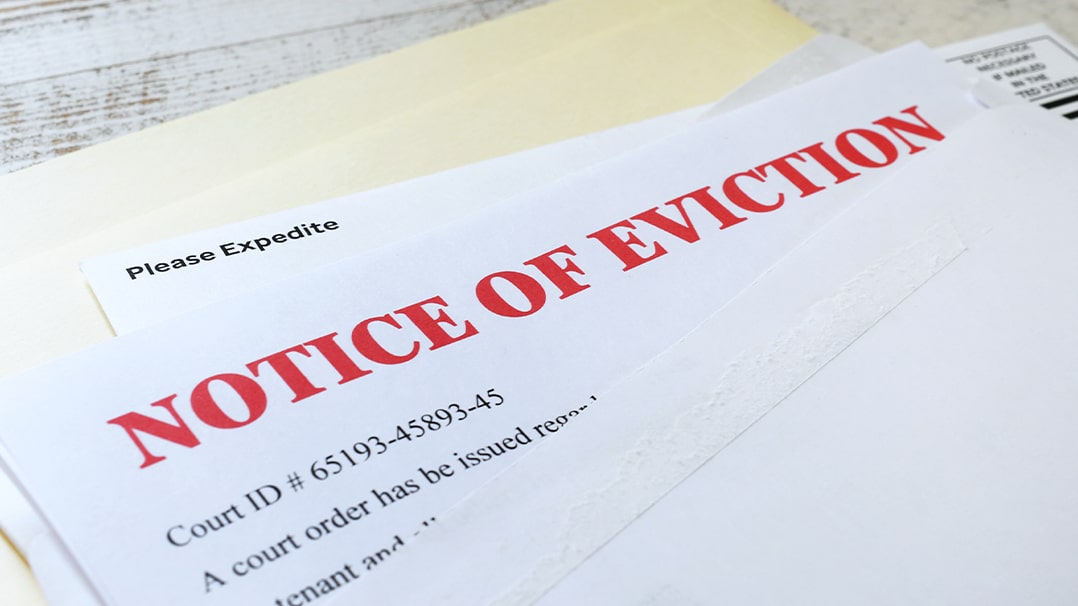
In general, you can expect to be required to have just cause for evicting a tenant, residential or commercial. There are defined timelines and processes to follow. Moreover, if you’re evicting someone for the purpose of making improvements to a property, the tenant you evict is generally given the right to return under the same lease and terms as before.
Commercial tenants have significantly less protection than residential tenants, but there’s still a process to follow.
11: Commercial Property Insurance
Commercial insurance can be complex, especially if you have specific considerations like commercial or fleet vehicles.
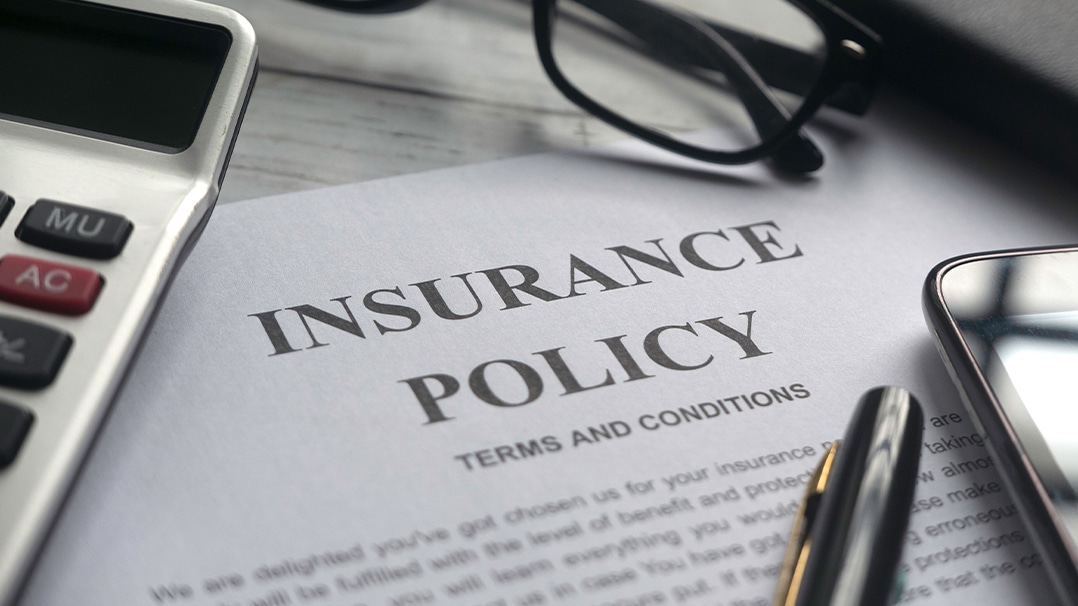
Depending on your lease type, you may be able to pass the costs – or even the responsibility of maintaining insurance – to the tenant. The California Department of Insurance provides a dedicated resource to help you sort it all out here.
12: Commercial Property Taxes in California
Property taxes in California have a state-level basis, and then additional local taxes based on things like school district, local services like police and fire, and city-level regulations. San Diego’s property tax regulations include bonds and Mello-Roos fees, among other things, and are generally under 1%.

While property taxes can be a significant expense, you also might not need to worry too much about them if you pass the costs on to your tenants in a triple-net lease. It’s up to you how you want to handle taxes.
13: Lease Durations and Renewals
Residential leases are generally anywhere from month-to-month leases to six-month or one-year terms. Commercial business leases are usually longer-term, especially for anchor stores. They usually average between 3 and 5 years, while the most important anchors can have leases even stretching to ten-year durations.

Understanding the duration, the pros and cons of longer leases, and which one is best for your property can be very important.
14: Rezoning Properties
Sometimes, a property may not be zoned the way you think it should be or that makes the most sense for an area.

There’s a defined rezoning process, usually going through a city-level authority. For example, I’ve run down the process in San Diego here. Other cities will have similar versions of the same process, so be sure to check with your local city government site to find their specific version of the process.
15: Inheriting Commercial Properties
Commercial properties are usually bought and sold, but sometimes they pass down to an heir upon the passing of the current owner.
If you own commercial property and you’re facing the end of your life, you’ll want to start thinking about what you’re going to do with the property. You can govern how it’s handled through the use of a living trust, which can be a powerful tool, but has specific considerations you’ll need to keep in mind. Alternatively, you can sell the property and deal with the funds in a more conventional manner.

If you’re poised to, or have recently, inherited a commercial property, you have a decision to make: do you rent it out and manage it as a revenue-generating asset, or do you sell it and use the funds to pursue your own ideals? If you need help making that decision, I’ve written a guide to assist over here.
16: Selling a Commercial Property
Buying and selling commercial real estate happens all the time, but that’s when you’re looking at it in aggregate. If you’re dealing with a single property, you might find it harder than you expect to sell, at least for a good price.

That’s where I come in. I’m an experienced representative for commercial real estate sellers, and I’ve facilitated some of the most noteworthy commercial real estate sales in the state. I’m the #1 SVN Broker in California, and I’m in the top 1% of brokers nationwide.
So, if you’re interested in selling a property you own, buying one you’re interested in, or just want to get started with the discussion, drop me a line, and if you have any questions, be sure to let me know! I’d be more than happy to help.

Erik Egelko is a veteran of the commercial real estate business with a specialized focus on Investment Property Sales. In 2021 and 2022, Erik was the #1 ranked Broker in California for one of the largest CRE Firms as well as ranked in the Top 1% of brokers nationwide. He has extensive experience in a variety of asset types including: Retail Shopping Centers, Medical Office Buildings, Industrial Properties, and Multifamily Apartment Complexes. Over the course of his career, Erik has closed over $100,000,000 of commercial property sales throughout Southern California.



